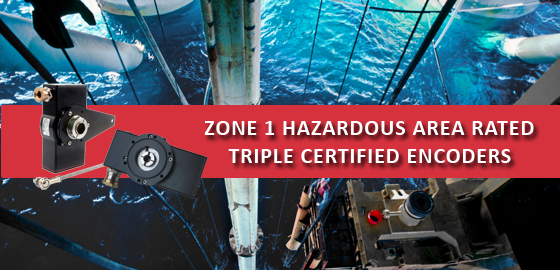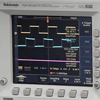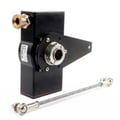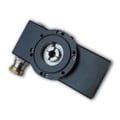SCADA remains relevant for industrial automation
Embedded workflow, engineering model support, and auto-discoverable assets are among the technologies keeping SCADA alive.
Placing computer power onto “edge devices” as near to production as possible is a goal hotly pursued in today’s industrial automation circles. What’s more, in just the past few years, copious amounts of process and operations data moved to the cloud.
Yet these developments by no means obviate the role of supervisory control and data acquisition (SCADA) systems as a convenient and secure aggregation point. SCADA instances are found across the oil and gas industries and in all major production industries. In fact, smart instrumentation and cloud modalities make SCADA more relevant to the entire business enterprise.
“One basic difference in today’s oil and gas environment is that it is expected that operations data can be accessed from the corporate office,” says Doug Rauenzahn, a product director.
SCADA installation
A SCADA installation typically includes computer workstations, programmable logic controllers (PLCs), and other instrumentation for system inputs and outputs (I/O). Unlike a distributed control system (DCS), SCADA control functions may be limited. The feedback loop passes through the PLC, while SCADA monitors loop performance. That is, PLCs assume parameter control, while operators monitor results and, for example, change set points. Peer-to-peer communications among the controllers may be lacking.
The more modern programmable automation controller (PAC) addresses these concerns to compete with a DCS as a control paradigm.
Another element of a SCADA installation is a distributed database and tag- or point-data elements. Each tag represents a single system input or output value. Examined in series, these value-time stamp pairs track point history. Metadata may also be stored with tags. Systems with many thousands of tags are common today.
SCADA includes tools for process design and development. Of prime importance is the ability to efficiently implement multiple instances of a system. SCADA implementations often include pre-integrated data historians and portal connectivity to aggregate data and communicate results, analytics, etc., to interested parties.
To deal with the complexity of it all, modern SCADA uses object-oriented programming to define virtual representations of each particular entity mirrored in the graphical interface. These virtual objects included address mapping of the represented node and other valuable information. Virtual objects also play a role in supporting SCADA’s ease of implementation since they are available for reuse in multi-plant scenarios.
Object orientation opens a wealth of possibilities. “The object model created in SCADA is an abstraction that can be used by other systems aimed at analytics and optimizations and to feed first-principle engineering or other type models,” says Andy Weatherhead, manager of global engineering.
SCADA increasingly incorporates the Industrial Internet of Things (IIoT) technology. Smart instrumentation and cloud technologies lead to more complex control algorithms, while open network protocols improve SCADA cybersecurity.
Upstream SCADA territory
As previously mentioned, SCADA is used extensively in industries including energy and power, water and wastewater, manufacturing, and refining. In the oil and gas industries, sub-sea level drilling and production control are typically the purview of DCS, although SCADA implementations tend to proliferate as a means to roles, based on collaboration or cross-functional operations.
According to Darren Schultz, director, of SCADA, oil, gas, and chemicals, in today’s North American upstream gas markets, the gas, well, or pad is typically PLC-controlled, as are the gathering systems connecting the pads, including the compressors involved. On the other hand, gas processing facilities, transmission gas lines, and gas delivery typically are under an independent DCS, and SCADA is widely applied in pipeline and distribution networks.
“Oil production is similar in that field operations are most often addressed with SCADA, refining with DCS, and pipelines are again SCADA-equipped. In the oil industry, you also have tank farms, which may be managed using DCS from nearby processing plants,” says Schultz.
Actual control requirements differ by well type. For natural-flow wells, casing pressure, temperature, and flowing-valve position are monitored, while gas wells further rely on compensated flow calculations. Remote control is limited to the shutdown valve on a natural-flow well. For an artificial-lift well, motors or gas lift valves are also controlled.
Compressor stations in a pipeline system maintain pressure for gas delivery to destination. A gas pipeline typically has multiple compressor stations. A gas or liquid pipeline has block or segmenting valves that can shut down pipeline segments. Valued information includes pressure, temperature, flow, and valve position. Pump stations maintain system pressure or match flow demand. Multiple pump stations connect to the pipeline, with connectivity back to a central location.
Beyond supervision and control
“What’s exciting about the upstream today is the great uses it has for cloud computing and for something that is happening right now, the advent of auto-discoverable assets technology,” says Weatherhead.
Use of auto-discovery will significantly ease the pain of field implementations. “The cloud offers a ready-made infrastructure for SCADA,” says Weatherhead. “Combined with a services approach, an operator can have power, use a wizard to set up, and be processing data in 5 minutes. Unfortunately, today, in too many cases, you see sites where despite using the very latest drilling technologies, after 3 months of work, they still haven’t tied into SCADA. Three months of lost optimizations is real money.”
Another interesting element to SCADA to petroleum industry efforts aimed at best practices actually has been available for some time. “Over the last several years I’ve found intense interest in the subject of workflows in upstream oil and gas,” says Weatherhead.
Workflows are the traditional discipline of industrial engineers or operations management specialists, types not typically found at wellsites. But workflow isn’t something applied exclusively in offices and factories. A defined process and defined work flow are important benefits for an upstream sector with operations that employ multiple 3rd party-specialist suppliers.
“What [are] wanted are workflows for such things as ‘take a well test’,” says Weatherhead. “It sounds simple, but if you don’t have the different systems involved well-test integrated, you can’t create a relevant workflow. Again, an object data model as found in SCADA provides a level of abstraction that allows easy linkages, much as a bus where elements use device drivers to plug in.”
According to Technical Toolboxes, an industry software provider, when thinking about SCADA implementations, one way to segment upstream operations is pertaining to a) reservoir, b) completion, and c) production. Once the requirements of each are defined by means of production workflows, improvements can be made. Cross-functional objectives can be addressed as role-based goals for “reservoir surveillance, well-test validation, and production optimization.”
With a Web browser, all interested parties-and no malicious parties-access a reliable, single source of truth. It’s the availability of a relevant, configurable interface that can kick off an evolution in how things work.
What’s more, “Web-based interfaces provide a self-service environment so resources aren’t wasted laboriously building or modifying screens. Users quickly become adept at building them and the dashboards that serve their needs. That being said, hesitations persist about using Web interfaces in a control network, as opposed to a business network,” says Rauenzahn.
IT-based automation strategies for the oil and gas industry
Rauenzahn says a more strategic approach to IT-based automation use in oil and gas industries will involve collecting data and managing operation in a way that approaches closed-loop control. “SCADA can furnish data to first-principle physics and other type models extensively used in the upstream. Model output is in turn used to tune predictive analytics models, which allow operators to see a well’s probable future direction. This is the advent, or at least contributes to, the ability of the oil and gas industry to achieve the kind of closed-loop control familiar in plant-based processes,” says Rauenzahn.
Weatherhead agrees. “Upstream production is not a closed-loop process, but that’s where the industry is headed. It will come, and it’s not so far away.”
At the end of day, Rauenzahn concludes, “You have to take a holistic approach to justifying automation expense in oil and gas. You have silos of data and silos of people. You have to look at the costs of poor coordination. When you can build workflows to reflect actual processes you can build a culture that encourages the information sharing [and] that leads to productivity growth.”
Kevin Parker is a senior contributing editor to Oil & Gas Engineering magazine.
Industrial Control Links (ICL) products can be found at AndersonControl.com here




 Controlling equipment has always been of interest in industrial applications. Before modern-day computers came into existence, a series of relays controlled that equipment and may have numbered into the thousands. Any updates required expensive and time-consuming manual labor by electricians who needed to rewire all of the relays.
Controlling equipment has always been of interest in industrial applications. Before modern-day computers came into existence, a series of relays controlled that equipment and may have numbered into the thousands. Any updates required expensive and time-consuming manual labor by electricians who needed to rewire all of the relays.

 Constant distance towards any metal
Constant distance towards any metal


 ATEX, CSA, IECEx Triple Certified
ATEX, CSA, IECEx Triple Certified
 Easy to Install with No I.S. Barrier Needed
Easy to Install with No I.S. Barrier Needed



